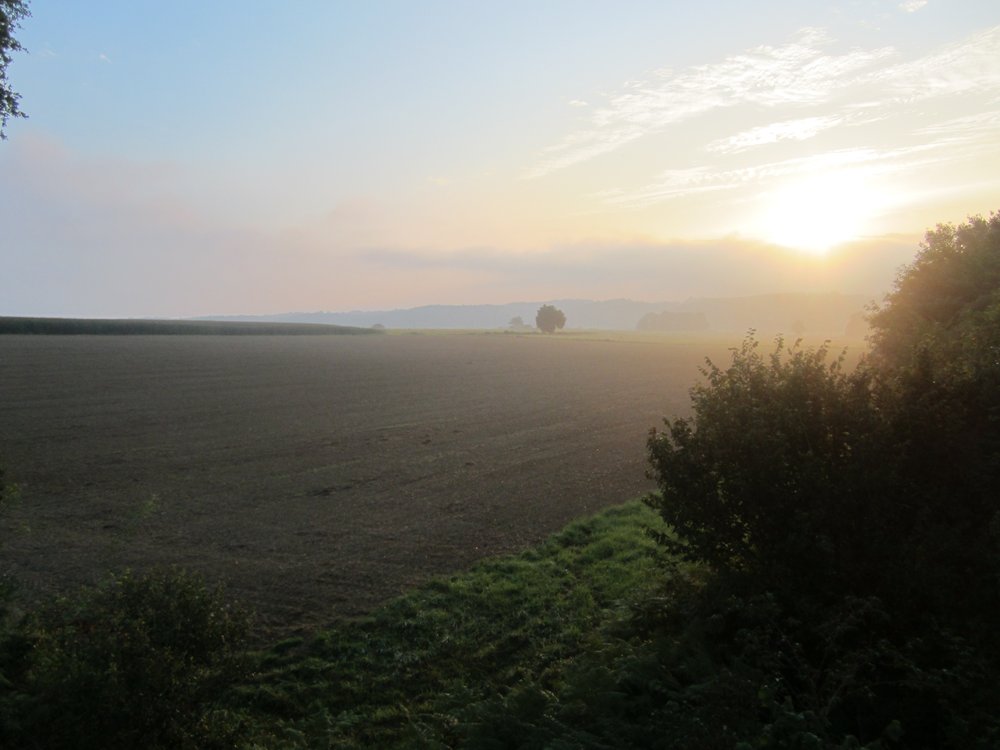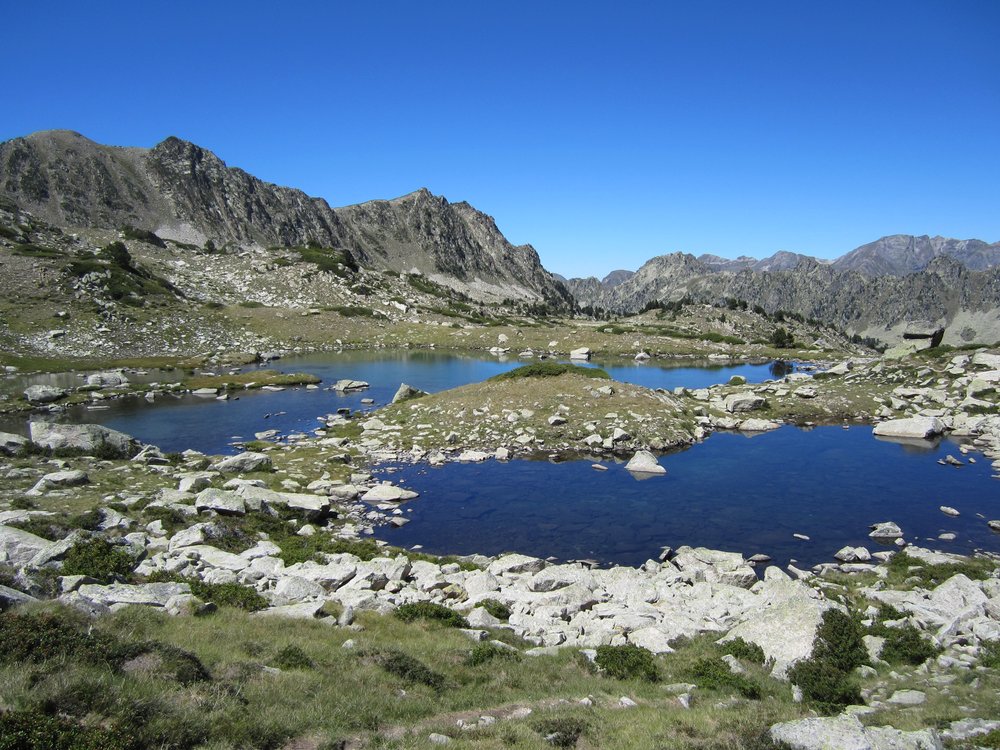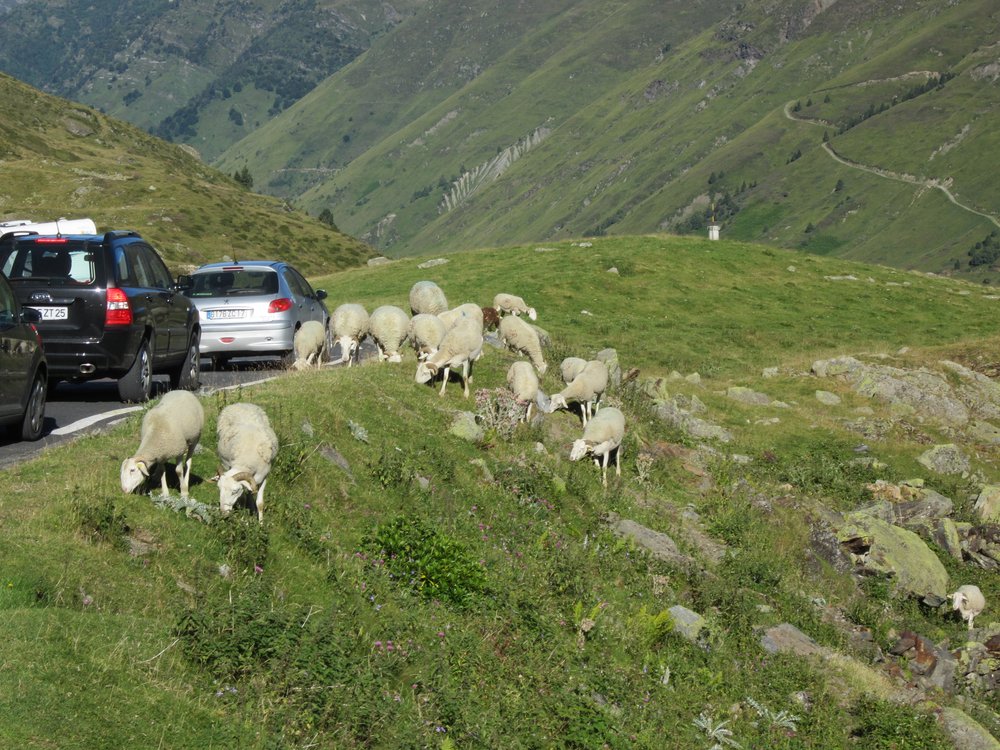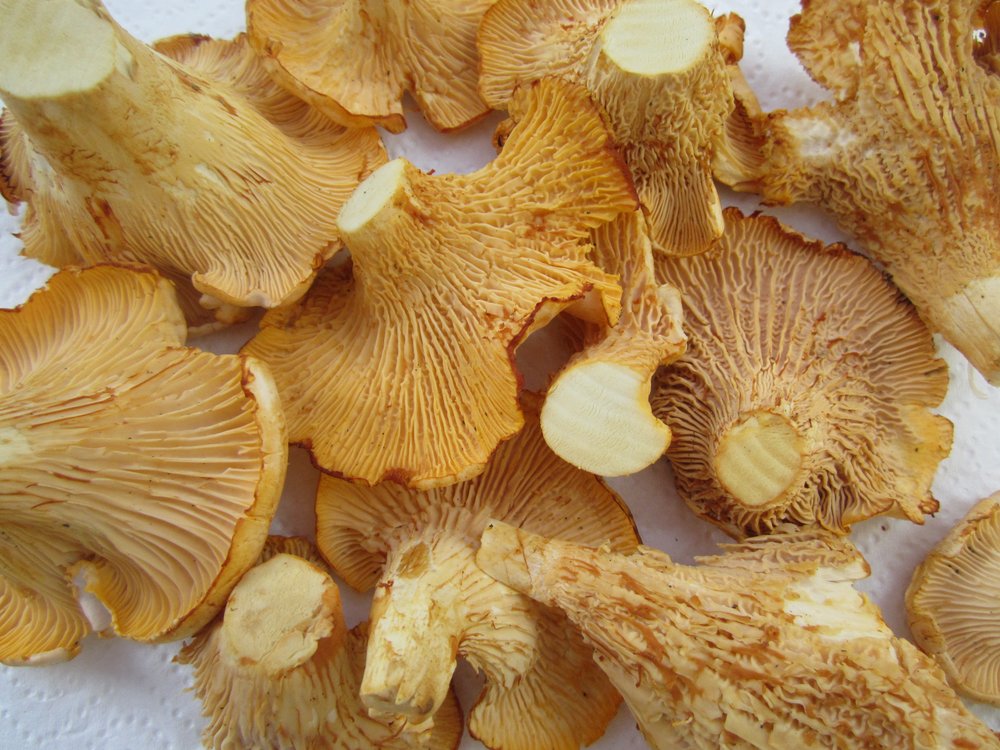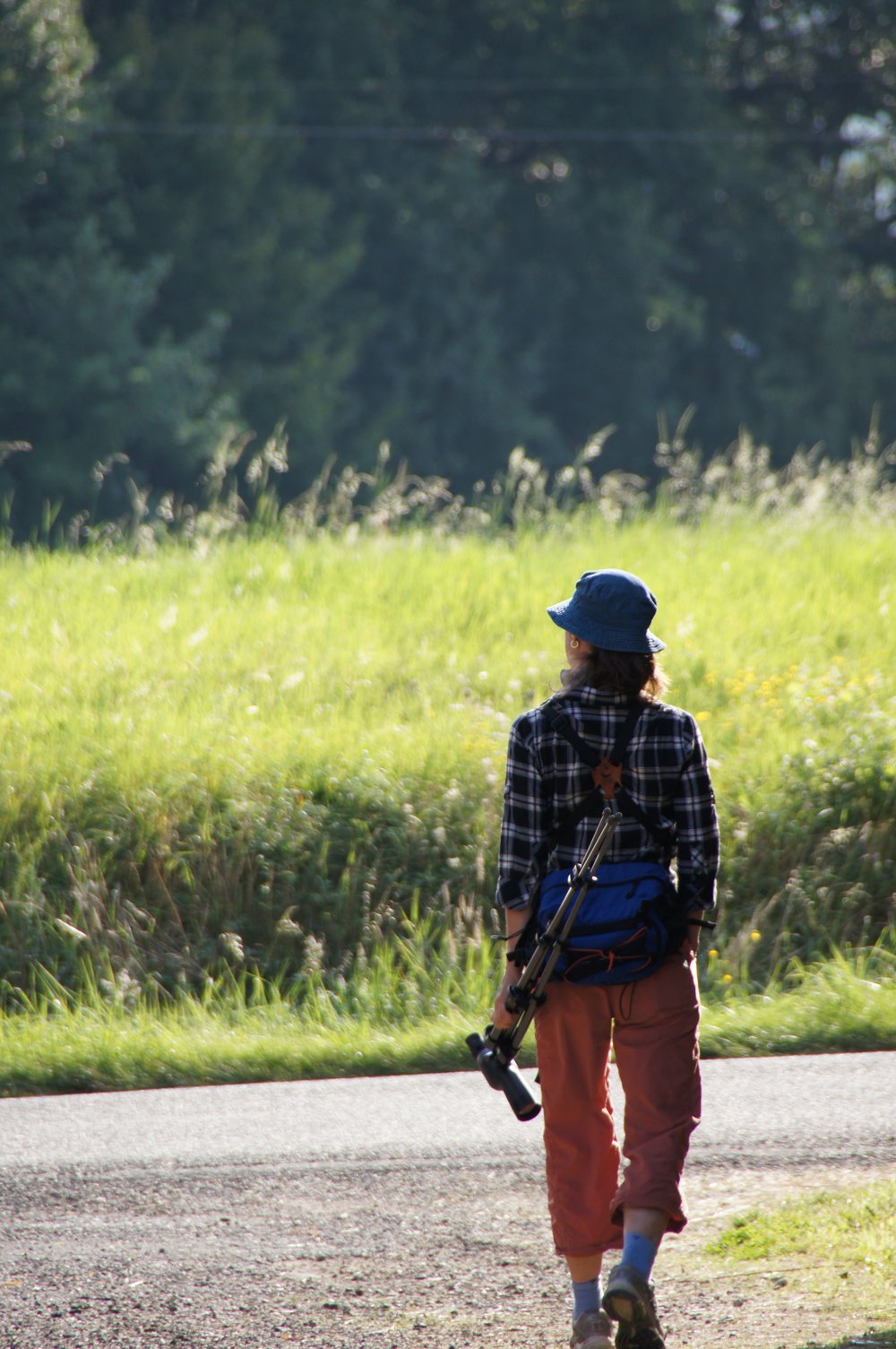
We drive south toward Trie. Our drive in the coming light reminds me of when I drove this route with Stanis back in the mid-eighties. Then, Trie called itself the largest pig market in the world; we were hauling a pig to market. We drove in Stanis’ small white Peugeot without speaking, Stanis tugging on a cigarette, his beret pulled down on his forehead. We made our up the winding hillside above Estampures, then shot down the main road into Trie. Selling the pig lasted less than three minutes—there was some conversation spoken in Patois, a shake of hands, and we walked off. By 7:30 in the morning we were in the local bar, filled with peasant farmers all dressed in black or blue pants, berets over their ruddy faces. Stanis ordered a glass of wine; I had some coffee.
On this morning, I have my scope at the ready, my binoculars poised. We are heading toward the lac Puydarieux. Neighbors told us about the lake—that it is a birding spot—just the night before. So though it’s my second to last day in Estampes, I want to see this spot. We turn toward Castelneau Magnoac and after missing the turn to the lake arrive a little after seven. There’s an information board with an impressive list of birds seen in the past week, included a booted eagle, a hobby, black and royal kites, and purple herons. I practically run to the lake. The first bird I see floating on the dammed lake is a great crested grebe, with a striped black and white baby begging and bobbing beside it. The lake is littered with birds, mostly mallards. But there are plenty of horned grebe, grey herons, coots, and gulls, which I can’t identify. We walk the edge of the lake, then across the dam as two men launch a boat to fish. I spy cormorant and teal, and then, to my delight, a hobby with its sharp elbows flies overhead (hobby in French is Faucon Hobereau, I learn). I find Lisa sitting on the dam, her camera to her eye, photographing flowers and dandelions and contemplating how she can capture the feel of this special spot we have found.
